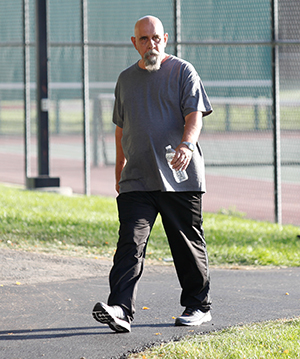Exercising After a Heart Attack

Aerobic exercises improve endurance. They also help your heart, lungs, and blood vessels work better. They make you breathe harder and sweat a bit. Most of your workout should consist of aerobic exercises. Good choices include walking, biking, and swimming.
Strength exercises build muscle. They can also improve endurance. Examples include lifting weights and using resistance bands.
Stretching exercises increase flexibility, balance, and posture. Stretching is also a good way to reduce stress.
Safety
-
Follow the guidelines your healthcare provider or cardiac rehab team has set for you.
-
If nitroglycerin has been prescribed, keep it with you when exercising. Take as directed. Call 911 if you have chest pain that is not relieved by resting or taking nitroglycerin. Don't drive yourself to the emergency room. Call an ambulance or have someone else take you. It can be dangerous to drive if you are having a heart attack or after taking medicines that affect your blood pressure.
-
Report any changes in symptoms, such as pain or shortness of breath, to your healthcare provider or rehab staff right away.
-
Besides monitoring your symptoms, track your heart rate and blood pressure.
-
Slowly increase the level of exercise in a gradual manner over several weeks. Don't feel as if you have to push 100% from the start.
-
Don't exercise right after eating large meals in very hot or cold temperatures. These events can increase the stress to your heart.
© 2000-2024 The StayWell Company, LLC. All rights reserved. This information is not intended as a substitute for professional medical care. Always follow your healthcare professional's instructions.